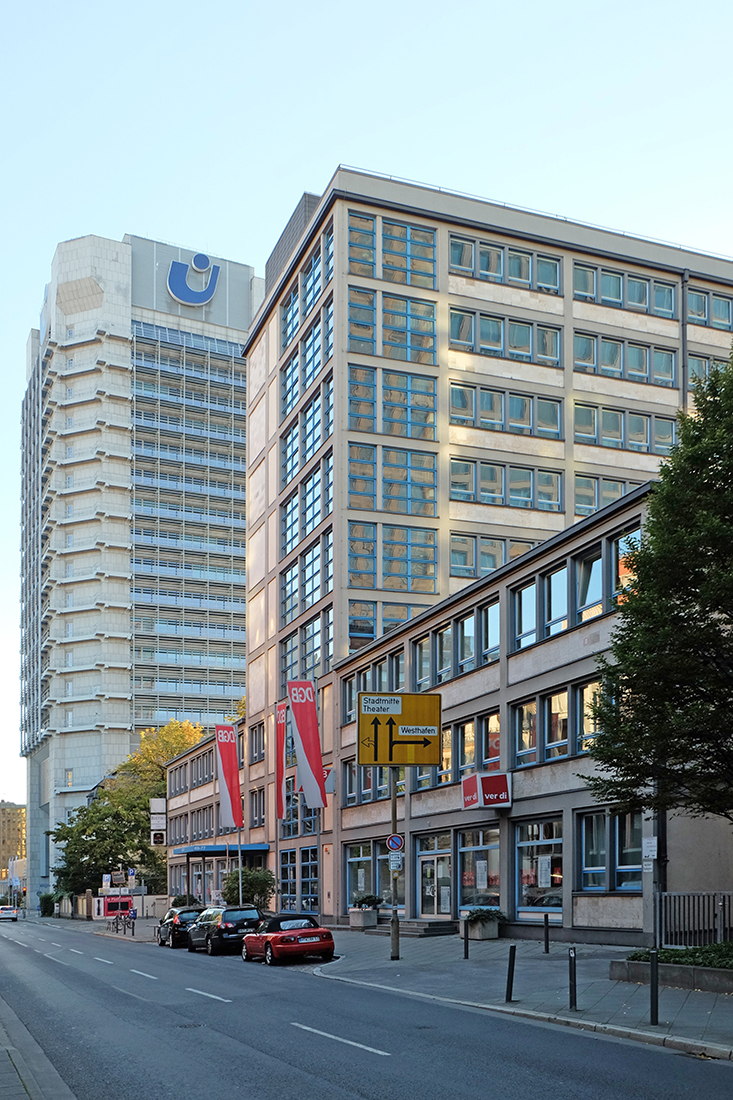 |
 |
 |
 |


Labor Union Building
Wilhelm-Leuschner-Strasse 65, Frankfurt
1929 - 1931
The labor union headquarters in Frankfurt was designed by the architectural office Taut & Hoffmann. Originally the nine-storey office building should accomodate a hotel, restaurants and event halls in addition to the offices of the labor union. The building is attributed to the period famous New Frankfurt. In terms of city planning the project was heavily criticized due to its height. Today, the 31-meter high building is no more times standing out of the Frankfurt skyline, while at the time of its construction it was the second talles office building in the city after the IG Farben Building (35 meters). It was regarded as the first true skyscraper in the inner city area. With height of tody modes 31 meters the Labor Union Headquarters should tower above the neighboring buildings, symbolizing the victory of the labor unions. It was errected in a former residential area, where the modern office building, realized in the style of functionalism, did not assimilate with the architecture of the area. The volume of the labor union building dominated the townscape seen from the river Main. As a consequence of disagreements with neighbours, it came to a trial. In the second instance the trial was decided in favor of the unions. The Frankfurt court approved the plan, but prohibited the Hotel and the garden restaurant. The construction of the Labor Union House was started in 1930 and already in July 1931, only eleven months of construction time later, the inauguration was celebrated. The building was constructed as a steel skeleton and offers about 4000 square meters of office space. The large glass surfaces were thoroughly considered sensational for its time. After the seizure of the National Socialists in early 1933, the free labor unions were banned and the house was taken over by the German Labour Front on 10 May 1933, which operated the building as a House of Labor. The Nazis planned a monumental extensions towards riverfront, which fortunately was never realized. The high-rise building survived the Second World War largely unscathed. 1946 the newly established free trade unions received back the house, today it is a listed building.